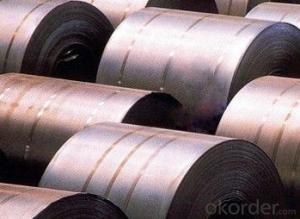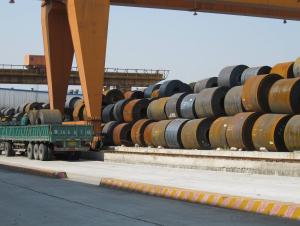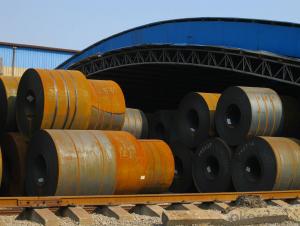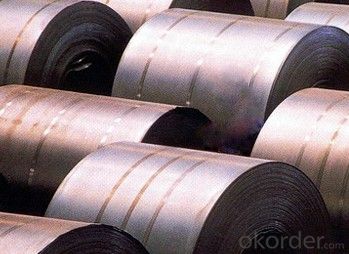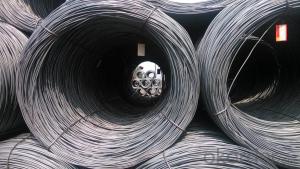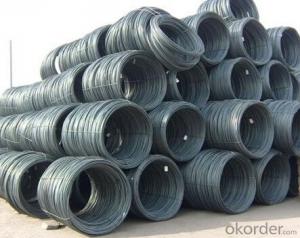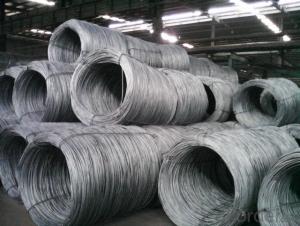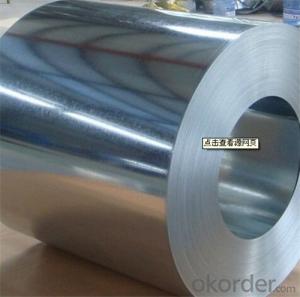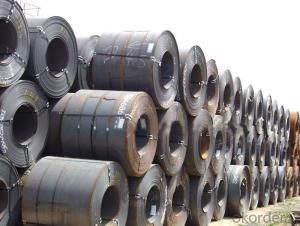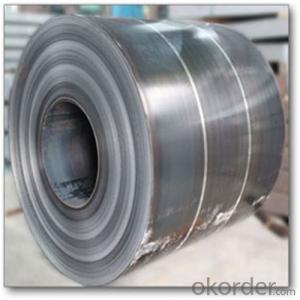Hot rolled steel coil for construction GB Q345B
- Loading Port:
- Tianjin
- Payment Terms:
- TT OR LC
- Min Order Qty:
- 25 m.t.
- Supply Capability:
- 100000 m.t./month
OKorder Service Pledge
OKorder Financial Service
You Might Also Like
Product Description
We are waiting for your email:
1.Description of Prepainted Galvanized Steel Coil and Color Coated Galvanized Steel Coil:
1).uses hot dip galvanized metal strip as the base material
2).zinc layer protection, dope on the zinc layer can cover and protect metal strip from rust
3). color coated sheet is light, beautiful and has good anti-erosion performance
4). can be further processed directly, corrugated or formed etc.
5). life span of PPGI is usually 1.5 times longer than that of galvanized steel coil
6). they are mainly applied for construction, decoration, roofing title, wall panel,
furniture, transportation and other industries
7).as a rich experience manufacturer, we provide quality product, competitive price and reliable after-sales service.
2.Specifications of Prepainted Galvanized Steel Coil and Color Coated Galvanized Steel Coil:
1).usage: home appliance manufacturing, decoration and building, special for manufacturing washing machinery, water heater and refrigerator.
2).grade:SGCC(DX51D-Z),SPCC,SPCD,SPCE
3).paint material: Normal polyester(PE, Epoxy)
4).thickness of top coating:20-25um,Thickness of back coating:7-10um
5).package method: Vertical/Horizontal, full wrapped with anti-moist paper inside, iron sheet wrapped outside, and bundled by iron strips
3.Prepainted Galvanized Steel Coil and Color Coated Galvanized Steel Coil Images:
4.Prepainted Galvanized Steel Coil and Color Coated Galvanized Steel Coil Specification:
Grade | Q195,SPCC,SGCC |
Standard | GB |
Base Plate | cold coil |
Coil ID | 506mm 508mm |
Coil weight | 3-8tons(as required) |
Thickness | 0.2-5.0mm |
Width | 1000mm-1600mm |
Surface processing | galvanized,galvalume,color coating |
Product Feature | good performance, highly precise, high straightness, high evenness and surface finishing, uniform thickness, easy for coating process, high tensile strength, high pressing property and low yield point. |
packing | Standard export packing. or according to customer's requirements. |
Delivery Time | 25 days after received your deposite |
Application | Building material,roofing,household appliance,tube making,construction |
Advantages | 1. Expert:Many years’ experience producing and trading on steel coil, cater to customers’ specific needs |
2. Price:competitive factory price |
5.PACKING:
6.FAQ
We have organized several common questions for our clients,may help you sincerely:
①How about your company?
A world class manufacturer & supplier of castings forging in carbon steel and alloy steel,is one of the large-scale professional investment casting production bases in China,consisting of both casting foundry forging and machining factory. Annually more than 8000 tons Precision casting and forging parts are exported to markets in Europe,America and Japan. OEM casting and forging service available according to customer’s requirement.
②How to guarantee the quality of the products?
We have established the international advanced quality management system,every link from raw material to final product we have strict quality test;We resolutely put an end to unqualified products flowing into the market. At the same time, we will provide necessary follow-up service assurance.
③How long can we receive the product after purchase?
In the purchase of product within three working days, We will arrange the factory delivery as soon as possible. The pecific time of receiving is related to the state and position of customers.Commonly 7 to 10 working days can be served.
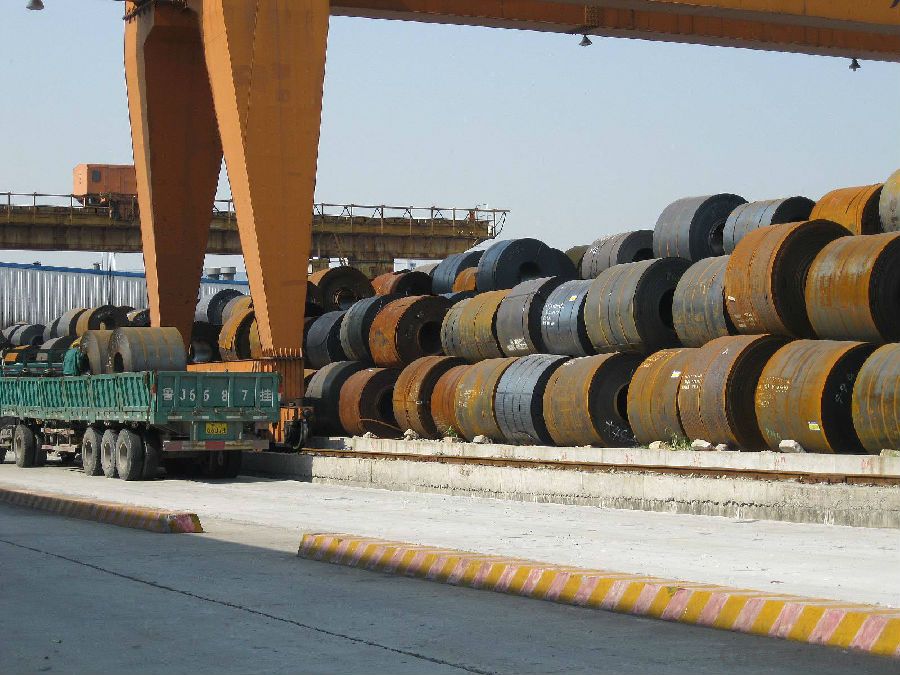
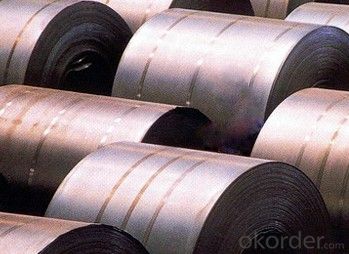
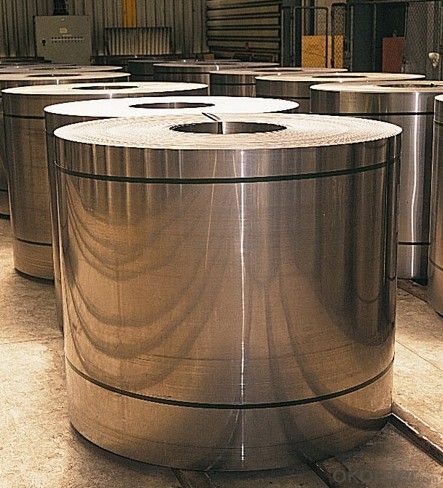
- Q: What are the different mechanical testing methods used for steel wire rod?
- There are several mechanical testing methods that are commonly used for steel wire rod in order to assess its quality and performance. These methods include: 1. Tensile testing: This is the most common and fundamental mechanical test for steel wire rod. It involves applying a pulling force to the wire rod until it breaks, in order to measure its ultimate tensile strength, yield strength, and elongation. Tensile testing helps determine the wire rod's ability to withstand stretching or pulling forces without breaking. 2. Hardness testing: Steel wire rod's hardness is an important factor in determining its suitability for specific applications. Various hardness testing methods, such as Brinell, Rockwell, and Vickers, can be employed to measure the wire rod's resistance to indentation or penetration by a hard object. This helps evaluate its strength and durability. 3. Bend testing: This method involves bending the steel wire rod to a specified angle and examining it for cracks or fractures. Bend testing assesses the wire rod's ability to withstand bending forces without failure, which is crucial for applications requiring flexibility or resistance to deformation. 4. Fatigue testing: Steel wire rod often experiences cyclic loading and unloading during its service life. Fatigue testing is conducted to evaluate the wire rod's resistance to repeated loading and unloading cycles. This test helps determine its endurance limit, fatigue strength, and fatigue life, ensuring the wire rod's reliability in applications with dynamic or cyclic loads. 5. Impact testing: Steel wire rod may encounter sudden impact or shock loads, especially in applications involving machinery or structural components. Impact testing measures the wire rod's ability to absorb energy and resist fracture under high-velocity loading. This test provides insights into its toughness and resistance to sudden loading, helping assess its suitability for impact-prone applications. By employing these various mechanical testing methods, manufacturers and users of steel wire rod can ensure its quality, performance, and suitability for specific applications.
- Q: How is steel wire rod used in the manufacturing of wire forms for ski lifts?
- Steel wire rod is used in the manufacturing of wire forms for ski lifts as it provides the necessary strength and durability required for supporting the weight of the ski lift cabins and passengers. The wire rod is typically shaped and formed into various components such as cables, ropes, and pulleys which are then assembled to create a secure and reliable system for transporting skiers up the slopes.
- Q: How are steel wire rods used in the production of wire springs for various mechanical applications?
- Steel wire rods are used in the production of wire springs for various mechanical applications as they serve as the primary raw material. These rods undergo a series of manufacturing processes such as drawing, coiling, and heat treatment to transform them into wire springs. The wire rods provide the necessary strength, durability, and elasticity required for the springs to function effectively in applications such as automotive suspensions, industrial machinery, and furniture.
- Q: How is steel wire rod used in the manufacturing of wire forms for signage?
- Wire forms for signage rely heavily on steel wire rod as a crucial element in their manufacturing process. The wire rod serves as the primary material for shaping and designing wire forms. To begin with, careful selection of the steel wire rod is based on its specific mechanical and chemical properties, such as tensile strength and resistance to corrosion. These properties guarantee the durability and ability of the wire forms made from the rod to withstand diverse weather conditions. Following the selection, the steel wire rod undergoes a series of manufacturing steps. Typically, the rod is drawn through a sequence of dies to reduce its diameter and increase its length. This wire drawing process enables the production of wires with precise dimensions and smooth surfaces. After achieving the desired thickness, the wire is further processed to create the specific shapes and forms required for signage. This may involve bending, coiling, or welding the wire into various configurations, depending on the design specifications. Once the wire forms are shaped using the steel wire rod, they are utilized in the manufacturing of signage. These wire forms often function as structural frameworks or supports for different types of signage, such as letters, logos, or decorative elements. They provide the necessary stability and rigidity to hold the signage in place, ensuring its integrity and visibility. Furthermore, the versatility of steel wire rod allows for the creation of intricate and complex wire forms that can be customized to meet specific design requirements. This design flexibility enables the production of visually captivating and distinctive signage, enhancing its aesthetic appeal and brand recognition. In conclusion, steel wire rod plays a vital role in the manufacturing of wire forms for signage. It serves as the raw material from which wire forms are shaped, providing the necessary strength and durability required for signage applications. The ability to customize wire forms allows for the creation of visually appealing and distinctive signage, making steel wire rod an indispensable component in the signage industry.
- Q: What are the main factors influencing the choice of steel wire rod end-user?
- The main factors influencing the choice of steel wire rod end-user include the specific application requirements, such as tensile strength, corrosion resistance, and durability. Other factors include price, availability, and the reputation and reliability of the supplier.
- Q: How is steel wire rod used in the manufacturing of wire for electrical applications?
- Steel wire rod is used in the manufacturing of wire for electrical applications as it serves as the raw material for producing electrical wires. The steel wire rod is processed through various stages, such as drawing, annealing, and coating, to transform it into a high-quality and reliable wire that can conduct electricity effectively. This wire is then utilized in the production of electrical cables, wiring harnesses, and other electrical components, enabling the transmission of electricity in a safe and efficient manner.
- Q: What are the different factors that affect the mechanical properties of steel wire rod?
- There are several factors that can affect the mechanical properties of steel wire rod. These factors include the composition of the steel, the heat treatment process, the rolling process, and the presence of any impurities. The composition of the steel plays a significant role in determining its mechanical properties. Different elements, such as carbon, manganese, and silicon, are added to the steel in varying amounts to achieve specific properties. For example, a higher carbon content can increase the strength and hardness of the steel, while the addition of alloying elements like chromium or nickel can enhance its corrosion resistance. The heat treatment process also has a significant impact on the mechanical properties of steel wire rod. Heat treatment involves heating the steel to a specific temperature and then cooling it rapidly or slowly to alter its microstructure. This process can affect properties such as strength, hardness, and toughness. For instance, quenching and tempering can increase the hardness and strength of the steel, while annealing can improve its ductility. The rolling process, which involves reducing the size of the steel wire rod through mechanical deformation, also affects its mechanical properties. The amount of reduction, the number of passes, and the rolling temperature can all influence the final properties of the wire rod. Higher reductions and lower rolling temperatures generally result in finer grain structures and improved mechanical properties. Impurities present in the steel, such as sulfur, phosphorus, and non-metallic inclusions, can also impact its mechanical properties. These impurities can weaken the steel and reduce its ductility and toughness. Therefore, maintaining low levels of impurities through proper refining and alloying processes is essential to achieve desired mechanical properties. In conclusion, the mechanical properties of steel wire rod are influenced by a combination of factors including the composition of the steel, the heat treatment process, the rolling process, and the presence of any impurities. Understanding and controlling these factors is crucial in producing steel wire rods with desired properties for various applications.
- Q: What are the different types of steel wire rod surface cleaning equipment?
- There are several different types of steel wire rod surface cleaning equipment, including mechanical descaling machines, shot blasting machines, acid pickling equipment, and high-pressure water jet cleaning systems. Each of these equipment types is designed to remove scale, rust, and other impurities from the surface of the steel wire rod, ensuring a clean and smooth finish.
- Q: How is steel wire rod used in the manufacturing of wire for suspension systems in planes?
- The production of wire for suspension systems in planes relies heavily on steel wire rod. This essential component is typically made from high-quality steel, which boasts impressive strength, durability, and flexibility. To ensure optimum quality, the manufacturing process begins with careful selection and inspection of the steel wire rod. It then goes through a series of treatments, including cleaning, surface treatment, and heat treatment, to enhance its properties for suspension systems. Once the steel wire rod is prepared, it undergoes further processing to create wire suitable for suspension systems. This involves drawing the wire rod through a sequence of dies, reducing its diameter and increasing its length. Known as wire drawing, this process refines the steel wire and enhances its mechanical properties. The resulting wire is subjected to a range of tests, such as tensile strength and fatigue tests, to ensure compliance with strict safety standards for suspension systems in planes. These tests validate the wire's ability to withstand the extreme forces and vibrations experienced during flight. After successfully passing the tests, the wire undergoes additional processing to meet specific requirements for suspension systems. It may undergo treatments like galvanizing or coating to enhance corrosion resistance and overall performance. Ultimately, the manufactured wire is ready for integration into plane suspension systems. It plays a vital role in providing support, stability, and flexibility to these systems. The steel wire enables the suspension system to effectively absorb shocks and vibrations during takeoff, landing, and turbulence, ensuring the safety and comfort of passengers and crew. In conclusion, the outstanding strength, durability, and flexibility of steel wire rod make it a crucial component in the manufacturing of wire for plane suspension systems. Through a series of processes, the wire is refined and subjected to rigorous testing before being incorporated into suspension systems, contributing to safe and comfortable flights.
- Q: What are the different surface lubrication methods for steel wire rod?
- There are several different surface lubrication methods for steel wire rod. 1. Phosphate Coating: This method involves applying a phosphate coating to the surface of the wire rod. The phosphate coating helps to reduce friction and improve the lubrication properties of the wire rod. 2. Hot Dipping: In this method, the wire rod is immersed in a hot lubricating oil or grease. The heat helps to melt the lubricant, allowing it to adhere to the surface of the wire rod. This provides a thin film of lubricant to reduce friction during processing. 3. Dry Lubrication: Dry lubrication methods involve applying a dry lubricant, such as a powder or solid film, to the surface of the wire rod. The dry lubricant forms a thin coating that reduces friction and provides lubrication during processing. 4. Polymer Coating: Polymer coatings can be applied to the surface of the wire rod to improve lubrication. These coatings can be in the form of a liquid that is sprayed onto the wire rod or a solid film that is heat-bonded to the surface. 5. Oil Coating: This method involves applying a thin layer of oil to the surface of the wire rod. The oil reduces friction and provides lubrication during processing. 6. Drawing Compounds: Drawing compounds are often used during the wire drawing process to lubricate the wire rod. These compounds are applied to the surface of the wire rod and help to reduce friction and improve the drawing performance. Overall, these different surface lubrication methods can help to reduce friction, improve surface finish, and enhance the processing performance of steel wire rod. The choice of lubrication method depends on factors such as the type of wire rod, the processing requirements, and the desired performance characteristics.
Send your message to us
Hot rolled steel coil for construction GB Q345B
- Loading Port:
- Tianjin
- Payment Terms:
- TT OR LC
- Min Order Qty:
- 25 m.t.
- Supply Capability:
- 100000 m.t./month
OKorder Service Pledge
OKorder Financial Service
Similar products
Hot products
Hot Searches
Related keywords
